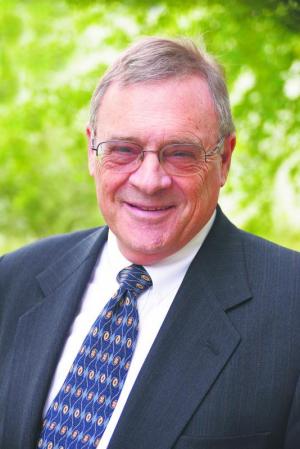Dr. Roger Coletti presents new pain relief technique at national conference
Dr. Roger H. Coletti, developer of an injection technique for relief of chronic pain caused by chronic muscle spasm, gave three presentations on his findings at this year’s annual meeting of the American Association of Neuromuscular and Electrodiagnostic Medicine, held Sept. 13-16 in Phoenix, Ariz.
These presentations covered evidence of sustained relief of long-standing pain, safety of the medication Coletti has pioneered, and a challenge to the established interpretation of electromyogram findings when chronic muscle spasm is present. Abstracts of the presentations have already been published in the September issue of the peer-reviewed journal Muscle & Nerve.
Coletti is now a full-time resident in Lewes, having retired from a long career in interventional cardiology, and he is beginning to train other physicians in the injection technique. He has also begun a collaboration with the Philadelphia College of Osteopathic Medicine to conduct further clinical trials.
The important implications of his presentation are that physicians able to use EMG will be able to identify when pain is most likely being caused by chronic muscle spasm. The prior textbook interpretations of these EMG findings cited only nerve damage as the cause. With that knowledge, not only Coletti’s CMECD technique but other treatments directed at chronic muscle spasm can be made available to patients having chronic muscle spasm as the likely cause of their chronic pain. These treatments could include acupuncture, electrical stimulation, massage or dry needling, for example.
He also presented a case report of a patient whose protruded low back disc regressed following the CMECD procedure. This result was verified by MRI scans before and after the procedure, and suggests a possible use of the procedure in place of surgery.
Some physicians have been using Botox or similar biologic drugs for chronic pain when chronic muscle spasm is present. These drugs are known to cause muscle weakness with repeated injections. One of Coletti’s presentations was on a patient with postoperative back pain and gradual healing of muscles cut in back surgery that required multiple injections. No weakness was observed with this FDA medication, phenoxybenzamine, used in an off-label manner. This demonstration of safety will go a long way for acceptance of this medication that costs a fraction of the currently used biologic drugs.
The third presentation dealt with the success rate of the CMECD procedure as demonstrated by a survey of nearly 100 patients treated over about a one-year period. The average patient had chronic pain for 5 years and up to 15 years, yet most had substantial if not complete relief of pain. Recurrences were rarely reported. These patients were unselected, meaning all patients regardless of site or duration of pain were accepted for treatment.
The most common causes of chronic pain are arthritis and muscle spasm. In the older population, arthritis of the hip, knee and shoulder can often be treated with surgery, which can give long-lasting relief in most cases. Low back pain stands out as the single most common cause of chronic pain. Coletti found that most patients with chronic low back pain suffer from chronic muscle spasm. He found growing evidence that the muscles not only cause pain by being in spasm and by compressing nerves but also by tilting or pulling together vertebrae to pinch the nerves. Relief of the spasm appeared to allow the vertebrae return to a normal position.
Many chronic painful conditions appear to be caused or sustained by muscles that progress into chronic spasm. The CMECD procedure typically involves only one or two injections to allow the muscle to return to normal. Widespread acceptance and use of this technique should significantly decrease the need and chronic use of pain medications. Coletti hopes the CMECD procedure has the potential to help win the battle against pain medication addiction and accidental overdose deaths.
There is no restriction or fee for physicians to learn or to use the procedure. Those interested in the procedure can find more information at www.CMECD.info. Dr. Jose A. Pando is now treating patients using the CMECD procedure. His office at 20268 Plantation Road in Lewes can be reached at 302-644-2633.
More general patient information is available at www.InterventionalHealth.com. As other physicians are trained and begin utilizing the procedure, that information will be added to the site.























































